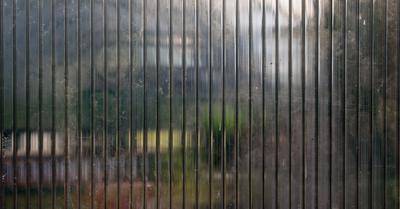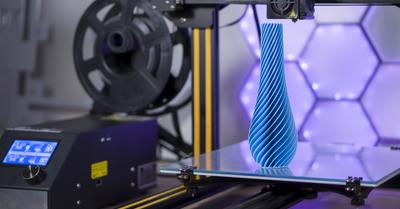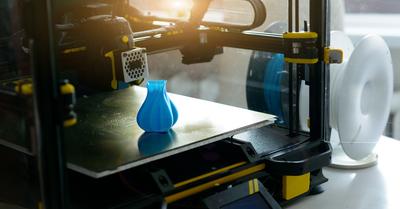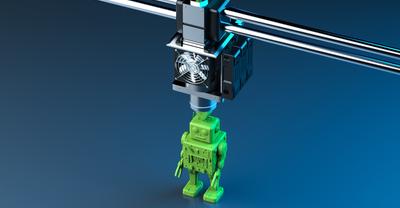What 3D printer filament is flexible?
Filaments that are made from Thermoplastics Elastomers (TPE)will be the most flexible. TPE blend together rubber and hard plastic producing an elastic filament that is easily flexed and stretched.
There are a range of TPE filaments available, the most popular being TPU (Thermoplastic polyurethane) which is used for both industrial and consumer applications. There are different blends some being extremely soft.
TPU is relatively heat resistant, able to withstand exposure to temperatures up to 80 degrees Celsius. TPU is commonly used in the automotive industry with its resistance to oils and greases and hard- wearing properties.
While TPU is a very flexible the exact level of flexibility depends on the software settings. A low level of infill will be more flexible. This flexibility in settings gives more control for desired level of elasticity or rigidity.
Additionally, TPU doesn't warp due to thermal shock which makes it preferable to other 3D printing materials.
A downside of TPU is that it is more difficult to print compared to other filaments due to the flexibility of the material. During printing it’s important to keep your feed rate consistent. If there are abrupt changes to the printing speed, the material can be difficult to control and may cause the filament to become compressed, which in turn will jam the 3D printer. Generally, it is recommended starting with a printing speed of 35 mm/s when working with TPU. You may need to test this in order to identify the optimal printing speed for your 3D printer.
What is the cheapest 3D printing material?
The most common and least expensive 3D printing material is plastic which includes PLA and ABS filament.
ABS Filament
ABS (Acrylonitrile Butadiene Styrene) filament is a thermoplastic which liquifies when heated and hardens when it cools. ABS filament becomes liquid at 105 degrees Celsius and does not degrade even after repeating the process.
The properties of ABS make it a highly versatile material that can be used in a wide range of 3D printed objects and structures. These properties include toughness and impact resistance. Combined with this is the low temperature point for ABS. This makes it ideal for use with an FDM (Fused Deposition Modelling) 3D printing machine.
ABS can be painted, sanded and machined making it very suitable for prototypes.
ABS isn’t recommended for objects and structures where high levels of heat will be applied due to its low melting point.
ABS is approximately $1.50 per pound, making it reasonable for the consumer 3D printing market.
PLA Filament
PLA (Polylactic Acid) is another common and inexpensive 3D printing material and is typically the default filament used in extrusion printers. The plastic requires low temperatures for 3D printing yet doesn't need a heated bed.
PLA is a popular entry level 3D printing filament because of low cost and wide range of objects that it can be used to create.
PLA is safe, biodegradable and recyclable because of its plant based make up. Contents include sugarcane and corn.
PLA is not recommended for objects which receive high levels of heat exposure due to its low heat tolerance. So, don’t use it for outdoor objects that are exposed to direct sunlight. Additionally, it can become brittle and break if too much pressure is applied.
What is the safest 3D printing material?
Certain objects, such as those that come in contact with food, require the safest possible 3D printing material. Some 3D printing materials contain toxic materials so using these to hold food or beverages could cause toxic exposure.
Another safety consideration is bacterial growth. Objects with a smooth surface are less susceptible to bacterial growth.
ABS is the most commonly used thermoplastic for 3D printing, but is not safe for objects that come in contact with food due to the ultra fine particles contained in ABS that may cause health problems.
Ceramic materials provide are a good choice for food safe printing. If you are planning on creating plates, bowls or dishes then ceramic is an excellent choice.
PLA (Polylactic Acid) is another somewhat safe option because of its plant-based makeup. PLA is a bioplastic that uses natural materials such as potatoes, corn or tapioca. Based on studies it was found to be safe when used for contact with simple food stuff such as water. The studies did identify some risks with PLA such as contamination by hot ends used in 3D printing, or inclusion of coloring additives, or bacterial contamination from cracks and holes in the printed objects. In general PLA is not the best material for objects that will repeatedly come in contact with food.
PET (Poly Ethylene Terephthalate) is another popular choice for a food safe 3D printing material. PET is the material that is used to make plastic bottles. PET printer filament is a colorless and clear material. When PET is either cooled or heated its level of transparency will change. Cooling PET will also cause the structure to become more crystalline. The result is a product which is both lightweight and shockproof.
There are variations of PET, including PETT and PETG. PETG is similar to PET, but includes glycol. PETG is generally viewed as a food safe material as well. The guidance on bacterial contamination applies to 3D printed objects printed from PET. Cracks or spacing in the object that allow for germs or bacteria, may make the object a health risk. Caution should still be applied when using PET produced 3D objects, if being used repeatedly for storing food.
What is the strongest 3D printing material?
For desktop 3D printing, most tests place PC (polycarbonate)as the strongest 3D printing material. It is a popular 3D printing material thanks to its lightweight, extremely strong properties. Because PC can be both transparent and extremely strong, it is used in products like bullet proof windows and motorcycle helmets.
In general, printing with PC is not as easy as working with PETG or PLA. It requires a high build plate temperature of 293 Fahrenheit or higher and the head should be set at 554 Fahrenheit or above. Despite complications, PC is widely regarded as the best choice for producing strong, heat resistant and complex objects using an FDM 3D printer.
Caution should be applied when using PC, as there is some evidence to suggest that the plastic can release bisphenol A particles. This was brought to the public's attention because of the use of polycarbonate in baby bottles. Some countries ban the use of polycarbonate for the manufacture of baby bottles. PC is used in the manufacture of a wide range of products, but not objects that come into contact with food.
PC is flexible like ABS, but provides more strength. Less common, more expensive yet lighter are PC filaments reinforced with fibers such as glass or carbon.
What 3D printed material is both flexible and tough?
Nylon is an excellent choice material that for flexible and tough. Nylon is impact and abrasion resistant and unlike some other 3D printing materials there are no bad odors while printing. Nylon is often used for products like cable ties, nuts, bolts and gears.
On the downside Nylon can be prone to warping and water absorption. It is important to store in an air tight container. Non dry filaments can lead to printing defects. Because of its water absorption, nylon does not work well in humid or moist environments.
When working with nylon it is recommended your 3D printer maintain a temperature between 70 and 90 degree Celsius. It will also require a heating bed and an enclosure. The extruder will need the capacity to produce temperatures between 225 and 265 degrees Celsius. You may also need an extruder with an all metal hot end.
Which 3D printing filaments can produce a wooden appearance?
Wood based filaments are essentially PLA based with a mix of wood-based derivatives. In general, wood-based filaments are a third wood particles and two thirds PLA.
Wood-based filaments are softer than other material composites such as metal or carbon and therefore less abrasive. If the wood look and not the wood feel is the only importance you can use a material that only has wood coloring.
Wood based filaments are used primarily to produce products with a wood texture and look. Other positive benefits include aromatic smell and it is harder to distinguish layer lines allowing you to use a larger layer height compared to other materials.
Wood based filaments are not appropriate for all 3D printers. Smaller nozzles result in clogging when using wood-based filaments.
Which is heat and wear resistant 3D printing material?
PEEK (Polyether ether ketone) is one of the most popular choices for high performance 3D printing. This material is commonly used in the automotive, medical and aerospace industries, as it can be used as a substitute for metal sometimes. PEEK has a high weight to strength ratio and is resistant to heat and wear. PEEK is available as a filament for FDM 3D printing, but it does have properties which can make it difficult to work with.
PEEK was first introduced to the industrial market in the 1970s. Because of the high-performance properties outlined above, it proved popular for electronics and aeronautics. PEEK is able to retain its mechanical properties even as heat is produced. It does require sophisticated 3D printing systems and knowledge.
To print using PEEK you will need a build plate that is capable of heating to 230 degrees Celsius and an extruder that can heat to 400 degrees Celsius. This is because the crystallization of PEEK needs to be controlled, with the heat maintained throughout. Fluctuations in the temperature can lead to warping. Along with the complexity of working with PEEK, another deterrent is the price. 1 kilogram of PEEK will usually retail for upwards of $USD 350.
Along with the aerospace and automotive industry, PEEK has also been adopted by the medical sector because it can be sterilized. The properties of PEEK can match those of bone, making it useful for implants and tissue reconstruction.
While PEEK is a 3D printing material that most consumers are unlikely to use, it does have interesting qualities that you would want to consider for specialty projects.
Is there water soluble 3d printing materials?
Yes, there are filaments available that dissolve when submerged or soaked in water.
PVA (Polyvinyl alcohol) is the most common water-soluble filament. This is a polar compound that dissolves completely when exposed to water. PVA is both biodegradable and non-toxic making it easy to dispose. You will find PVA used in many common household products such as contact lens solutions and textile glazing.
For 3D printing, water-based filaments are most commonly used to create support structures. When you want to remove the PVA structure, it can be dissolved in water. It can take anywhere from a couple of hours to a full day for PVA to completely dissolve. And, if you use an insufficient amount of water you may find that it will clump. PVA is still relatively easy to remove even if it clumps, but you may need to use pliers to achieve this. Often it will take some experimentation to achieve the correct amount of water required.
Another reason that PVA is often used as a support structure is because it prints at about the same temperature as PLA. You can also use PVA with other common filaments such as TPU or Nylon, although typically won't work as well as PLA. In order to print with both PLA and PVA you will need to have a printer that provides dual extrusion. For the best results use a temperature range of 185 to 200 degrees Celsius when you are working with PLA and PVA together. You don't necessarily need to use a heating bed, but it does help to improve adhesion. If you are using a heating bed then the temperature should be between 45 and 60 degrees Celsius. If you set the heating bed at a higher temperature at first, and then decrease for additional layers, it will help to avoid warping.
Along with a wallet friendly price tag, PVA can also be removed easily from PLA and also used with a wide variety of materials and still be dissolved easily in water.
Water soluble filaments are a specialist printing material, but if you are producing highly complex objects then they can be invaluable. If you are printing a structure or object that requires support during the printing process you may need to learn how to work with water soluble filaments. Water soluble filaments are not always the easiest 3D printing material, but once mastered, they can open up a new range of objects and structures that can be produced. The fact that they dissolve easily in water, means that the process of removing them couldn't be easier.
Which 3D printing material can produce parts that look and feel like metal?
If you want to produce an object with a metallic appearance then a metal-composite is the answer.
Plastic is the basic material of desktop 3D printing, but that doesn't mean you can't produce objects with a metal look and feel. Metal composite filaments combine a mix of about 40 - 60% metal powder with a plastic PLA. These filaments don't just produce objects that have the appearance of metal, they actually feel metallic as well. The parts that are produced will be heavier than those composed of standard PLA. They will also weather and oxidize like metal.
Despite their appearance metal-based filaments do not have the properties of pure metal. In terms of performance you are usually better using a traditional thermoplastic. By adding metal powders into the PLA filament, it actually causes it to become more brittle. This is why metal based filaments aren't used in industrial manufacturing. The reason that they are used is because of their ability to simulate the qualities of metal objects.
Metal-composite filaments can be printed using the same setting as with standard PLA. They print at a temperature of approximately 200 degrees Celsius. You can print without a heat bed, as these filaments are less likely to warp than standard PLA.
Objects printed with a metal-based filament will require post processing. When the part is printed it does not initially have a metal appearance. Instead they tend to have a matte finish, with the color resembling that of the metal used in the filament. Post processing metal-based filament objects requires the use of a rock tumbler to polish and bring out the shiny metal look.
Metal-composites are significantly more expensive than standard plastic filaments.
Where can you buy 3D printing materials?
There is no shortage of both online and offline locations through searching either Amazon or Google. Using either option will produce an extensive selection of 3D printed materials.
In addition, you can go direct to 3D printing manufactures or third-party sellers to find 3D printing materials.
Some of the most popular 3D printed material sellers include:
You can also purchase 3D printing materials through big box retailers including Walmart and Home Depot.









